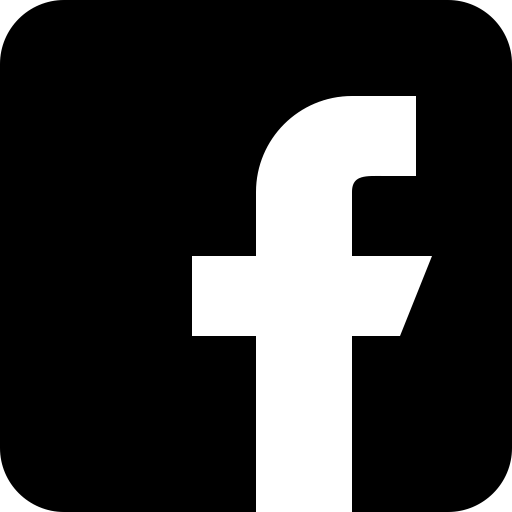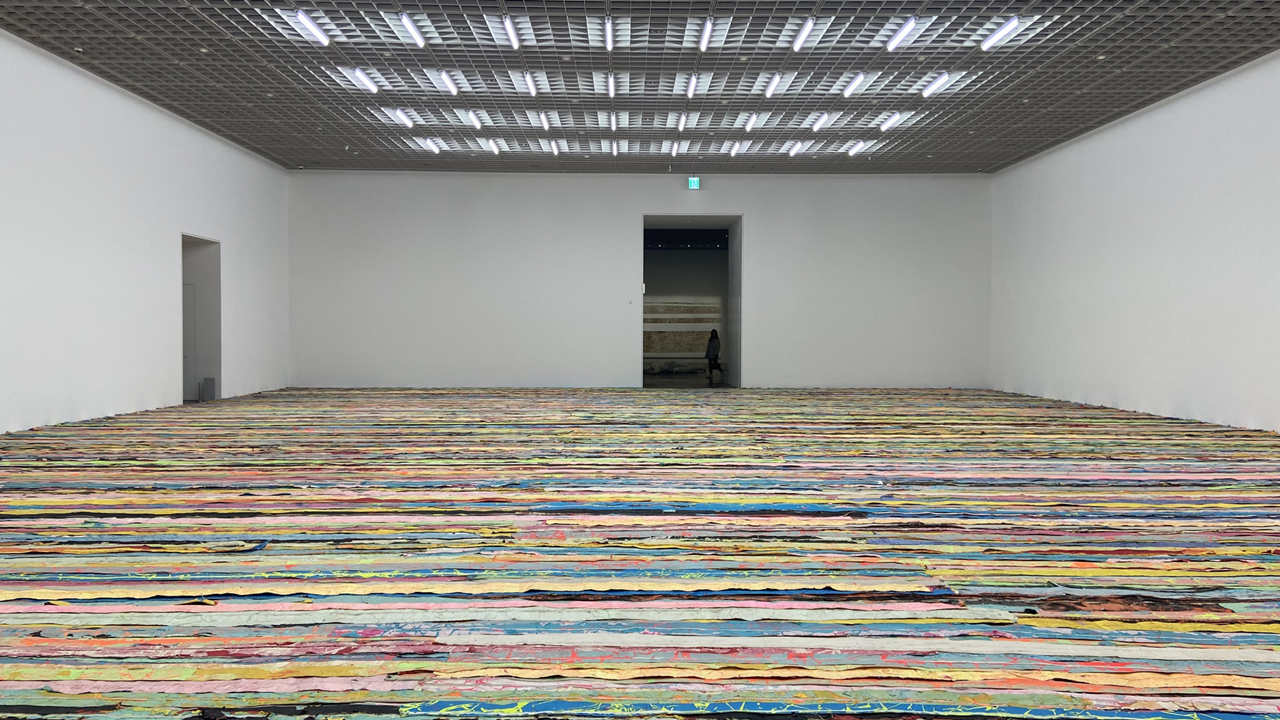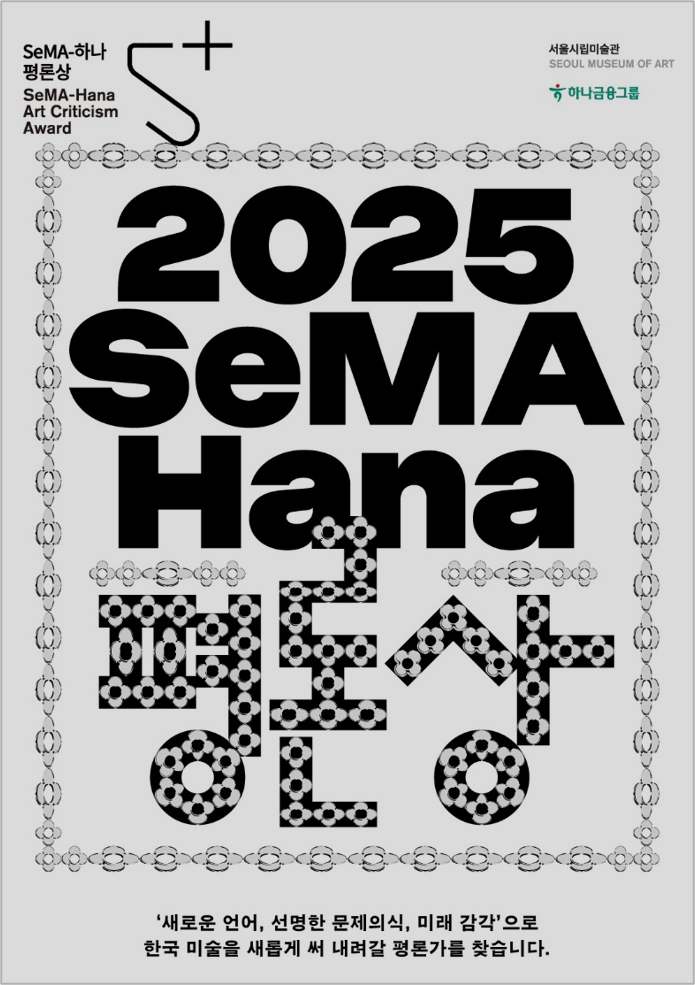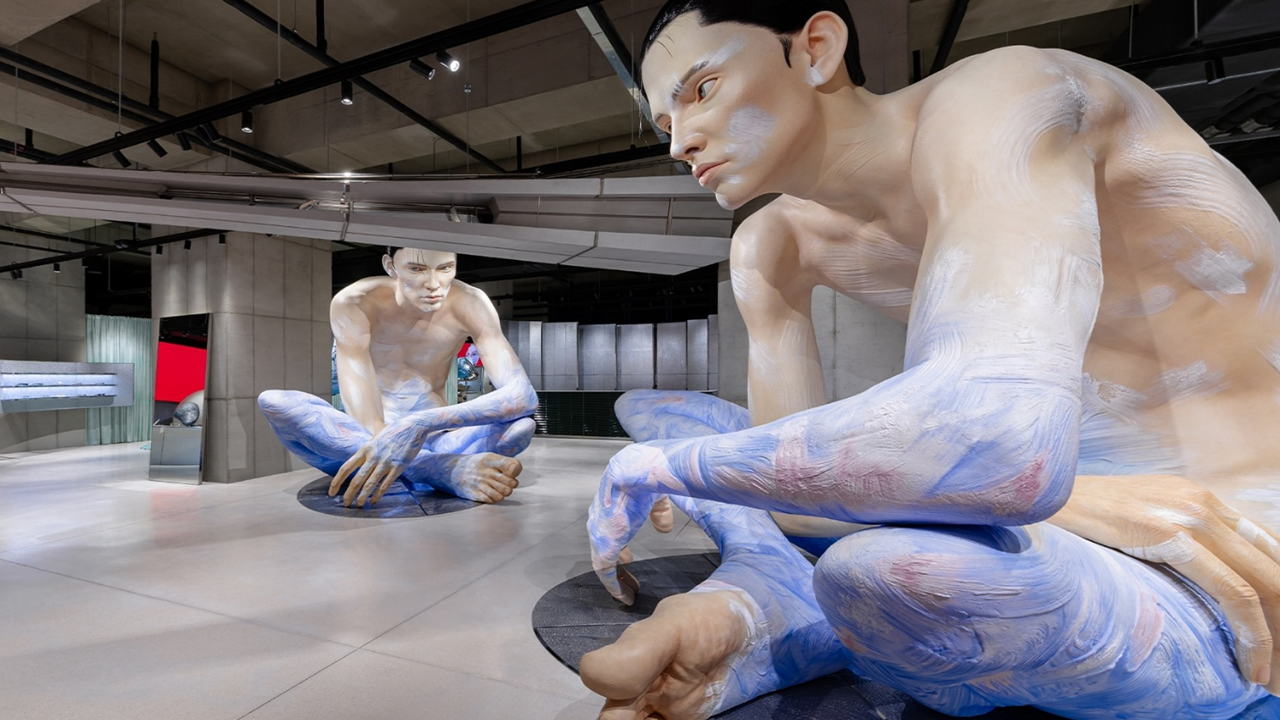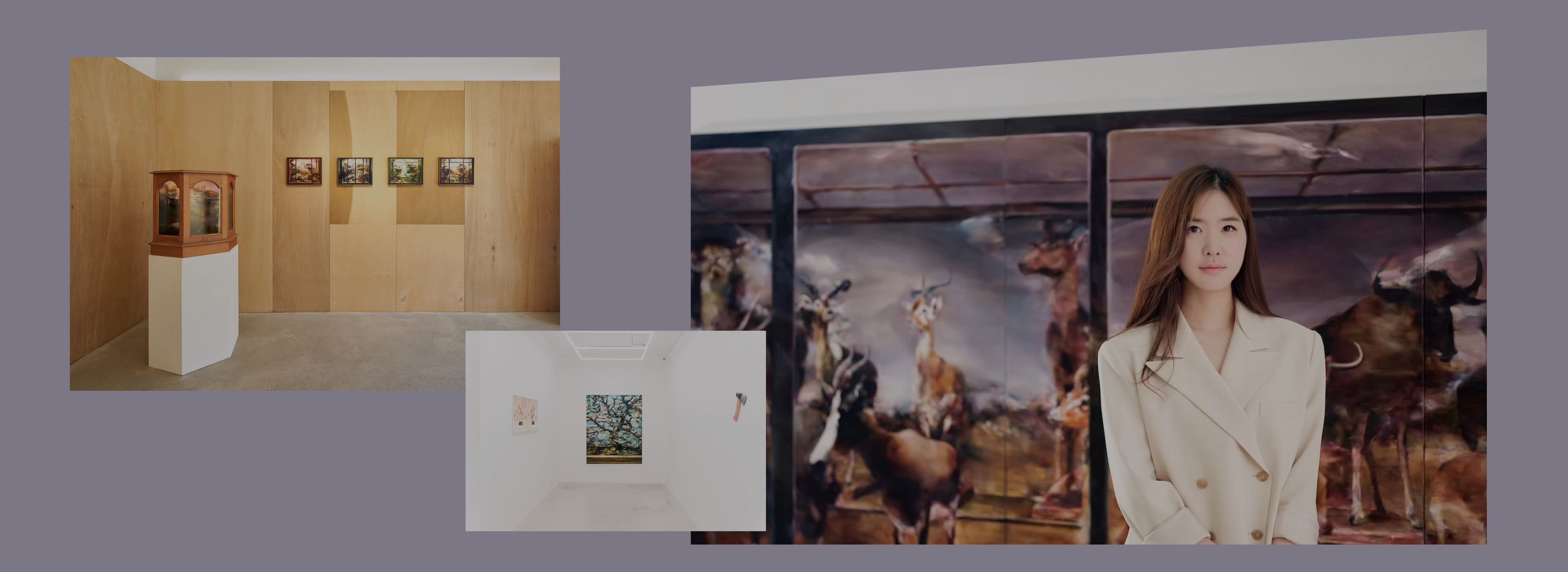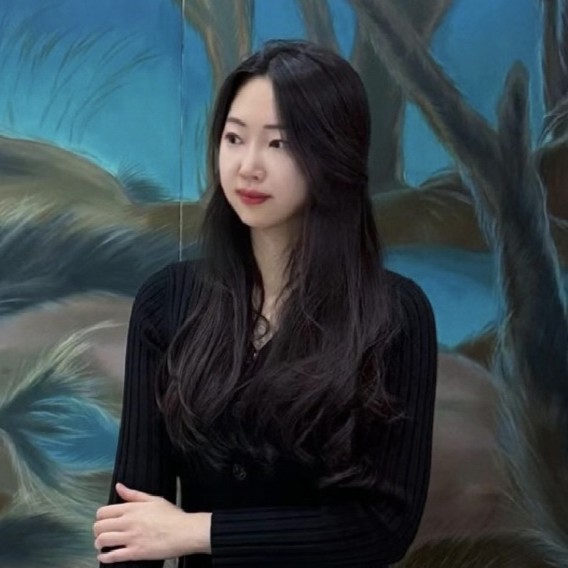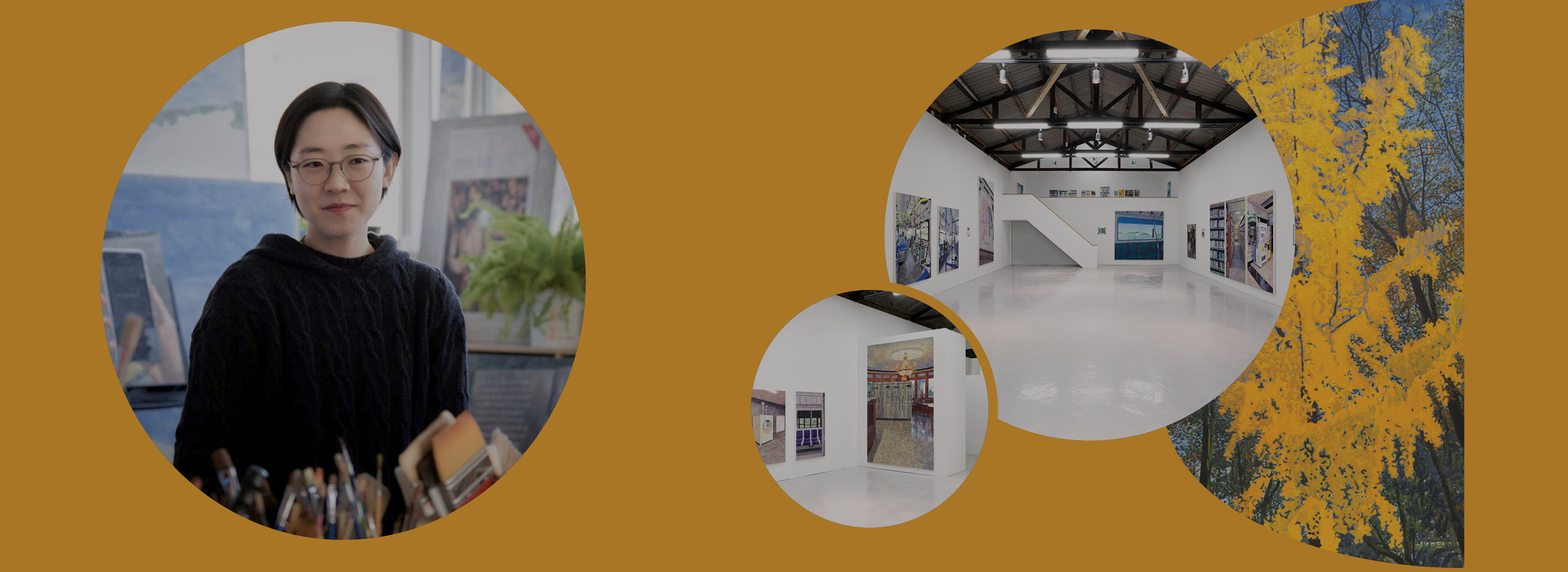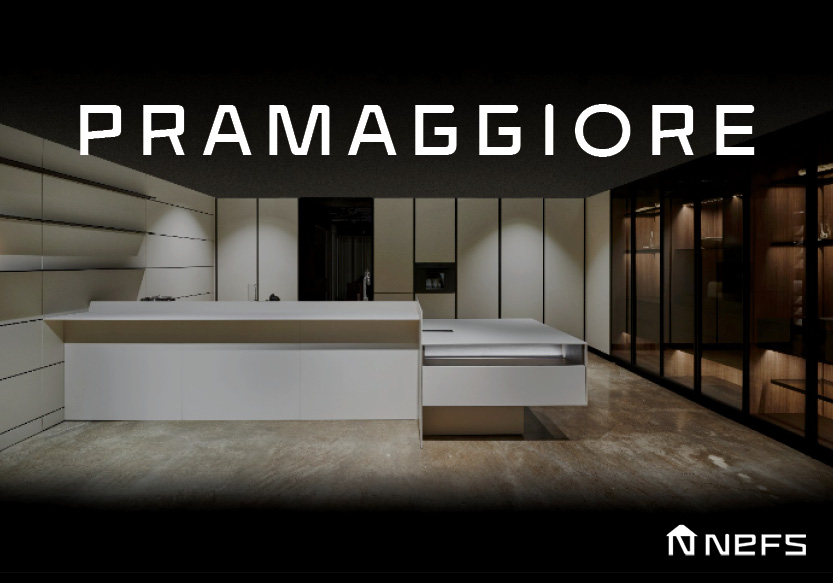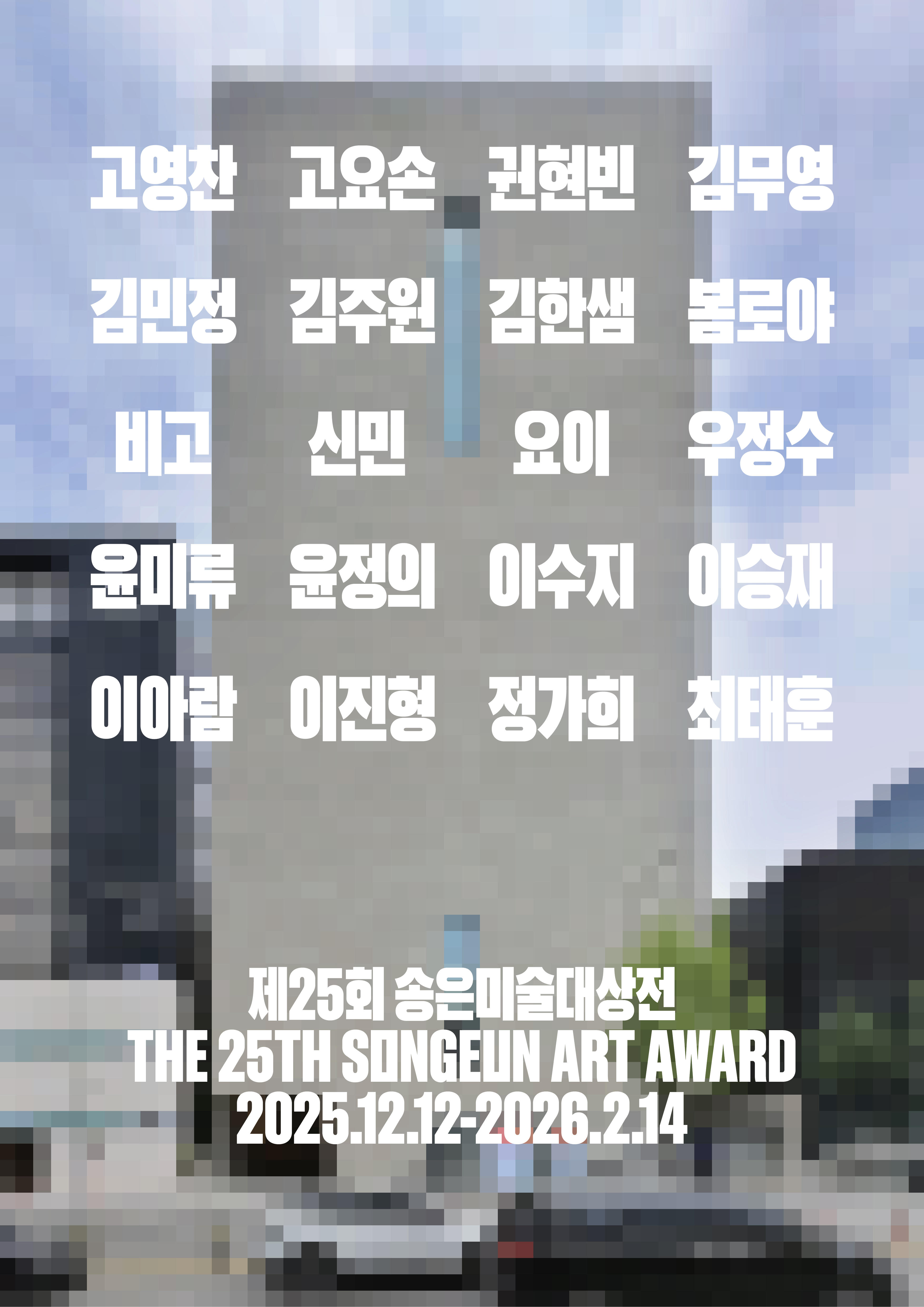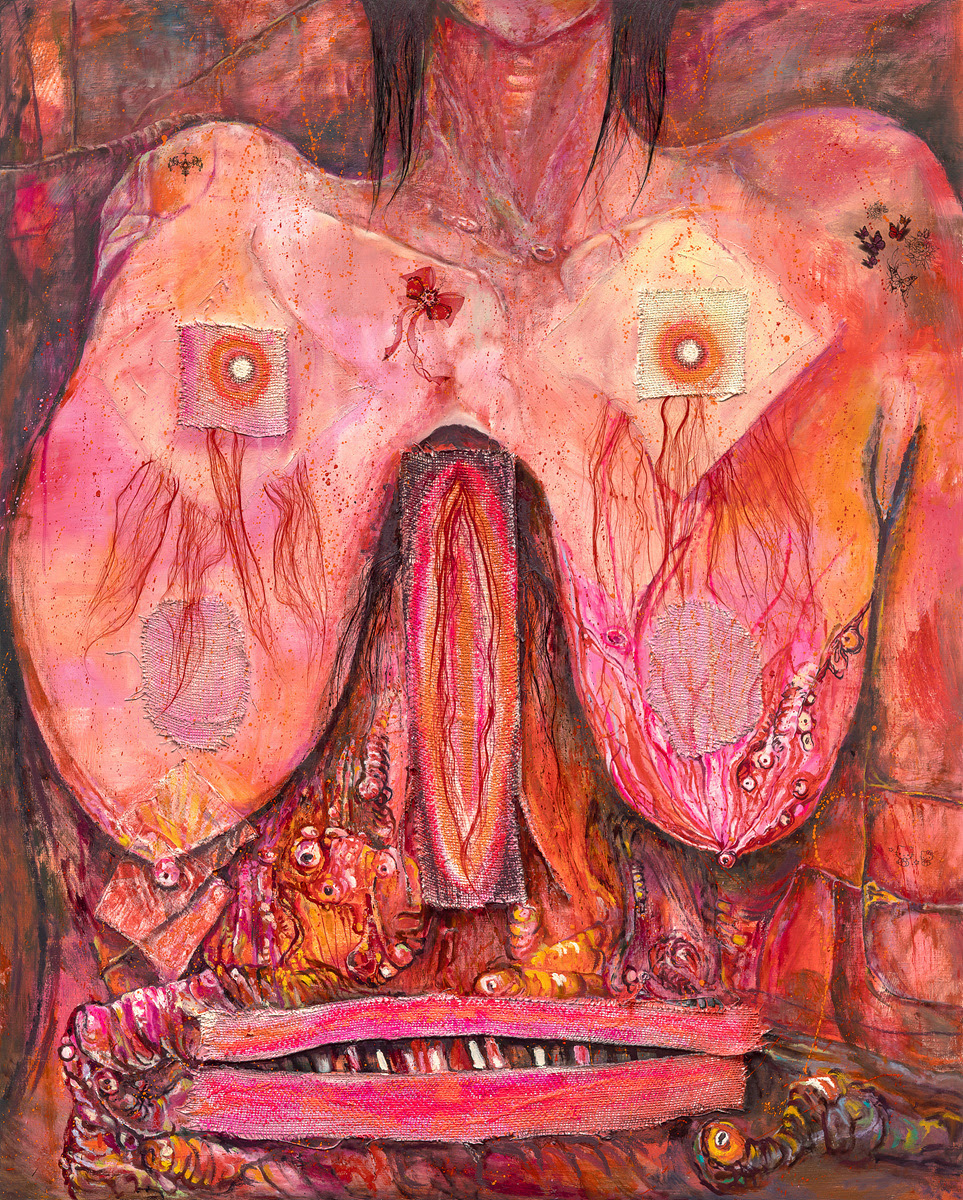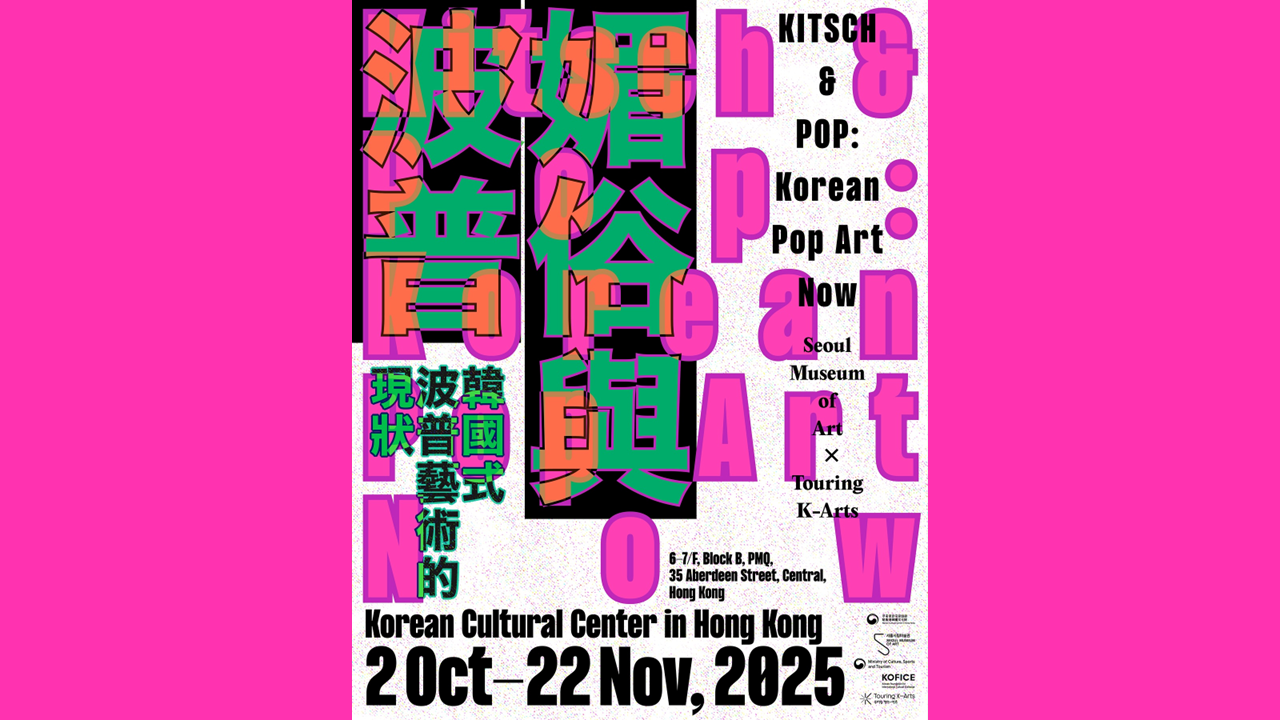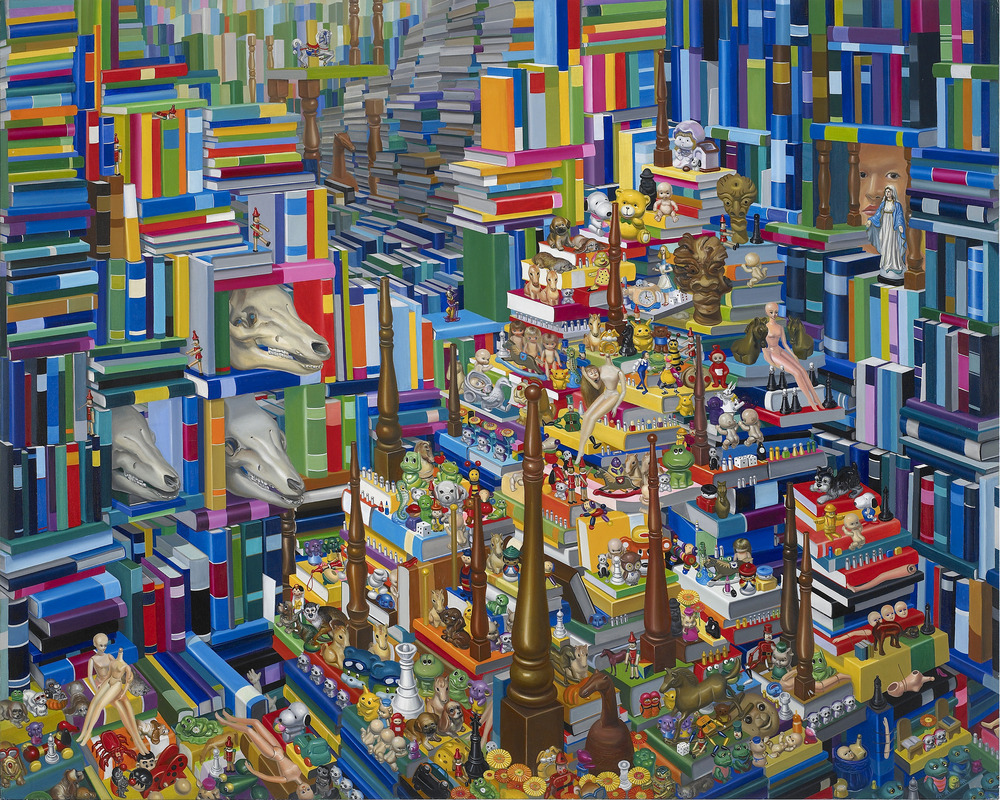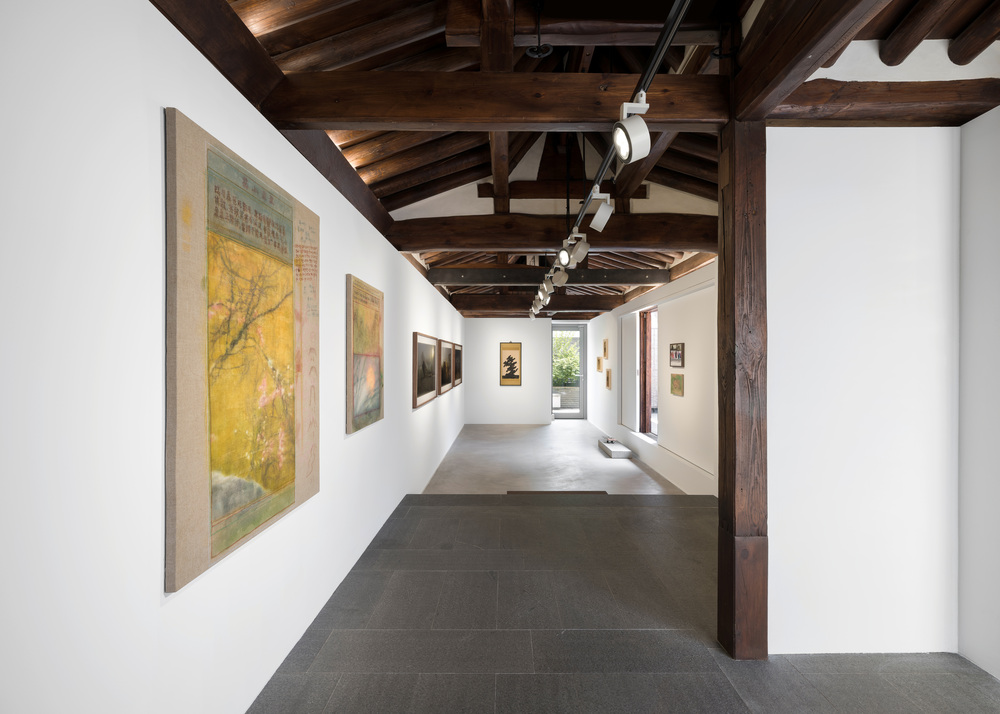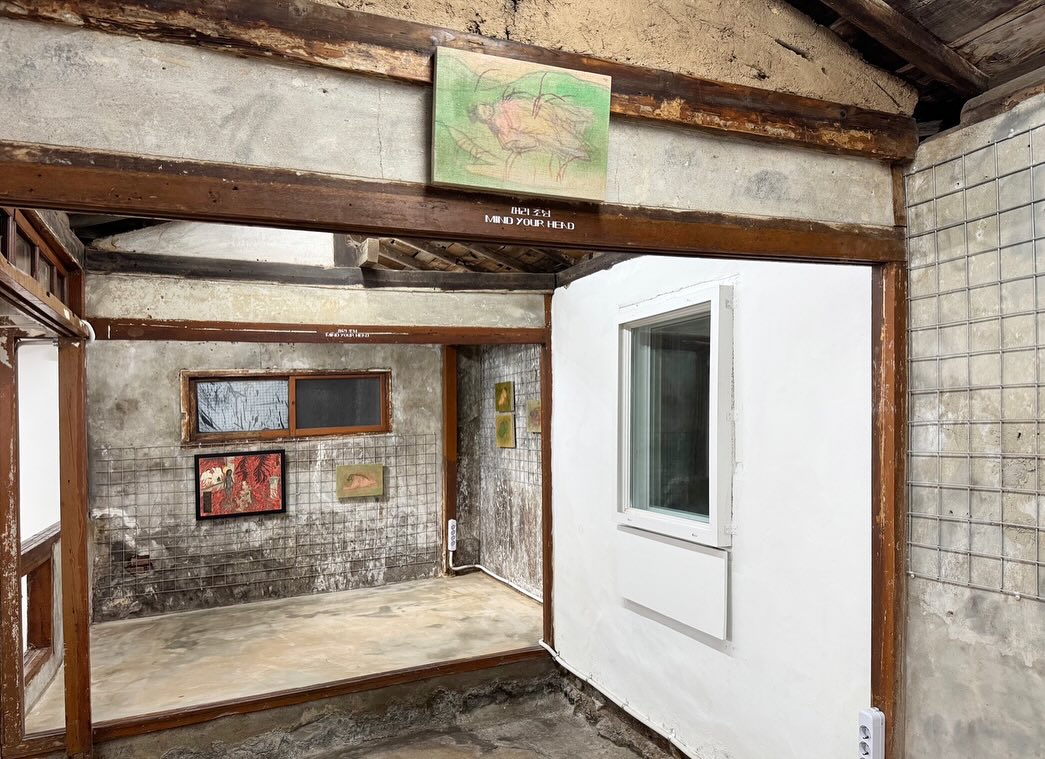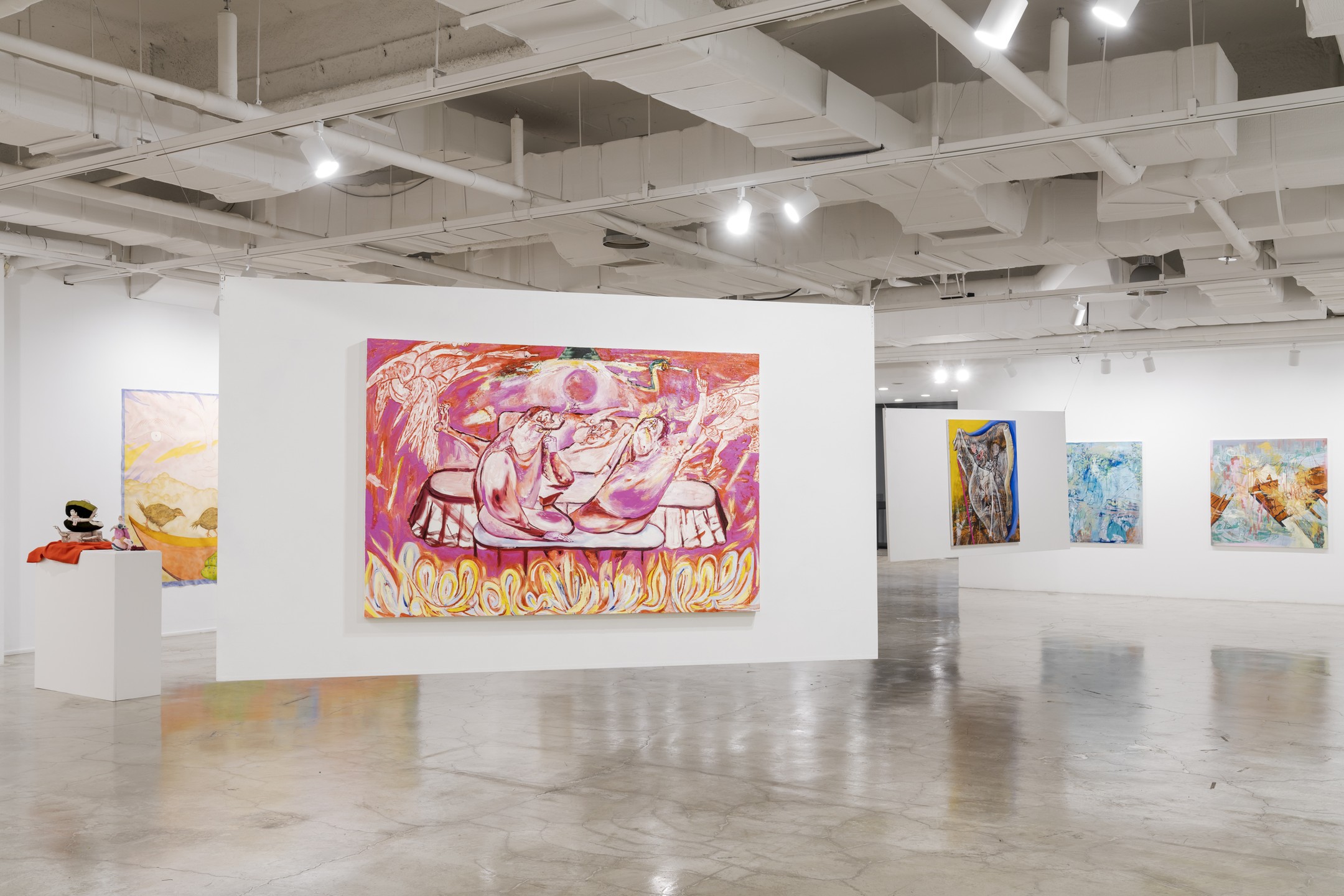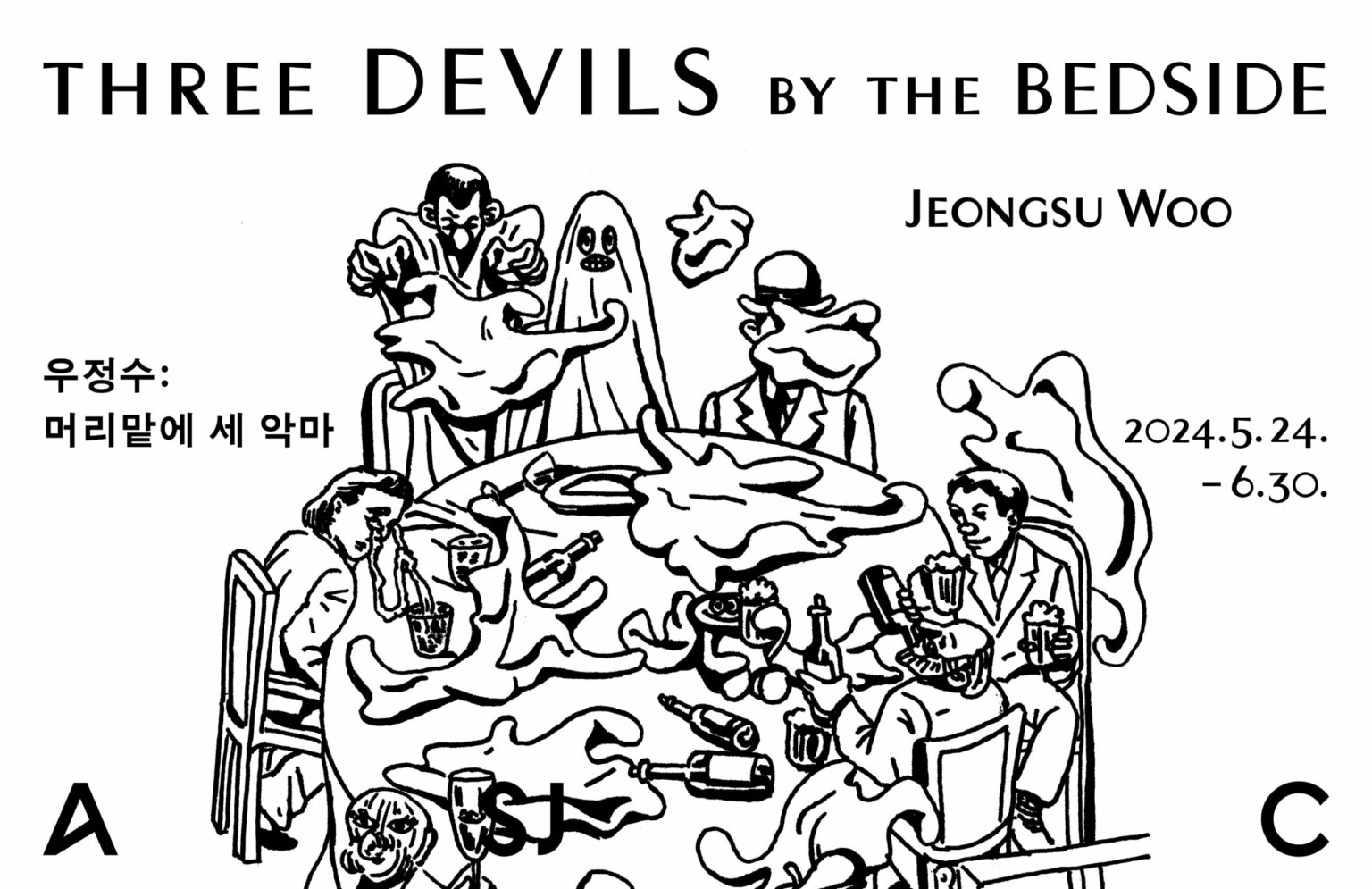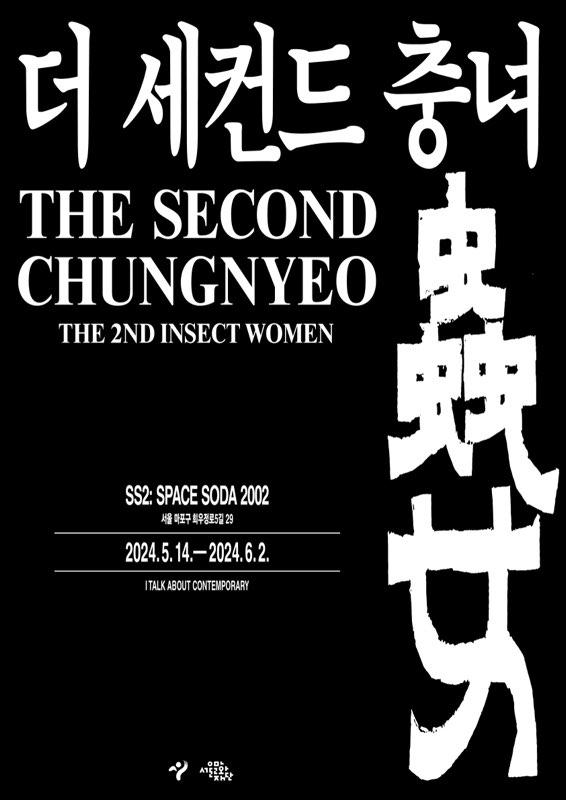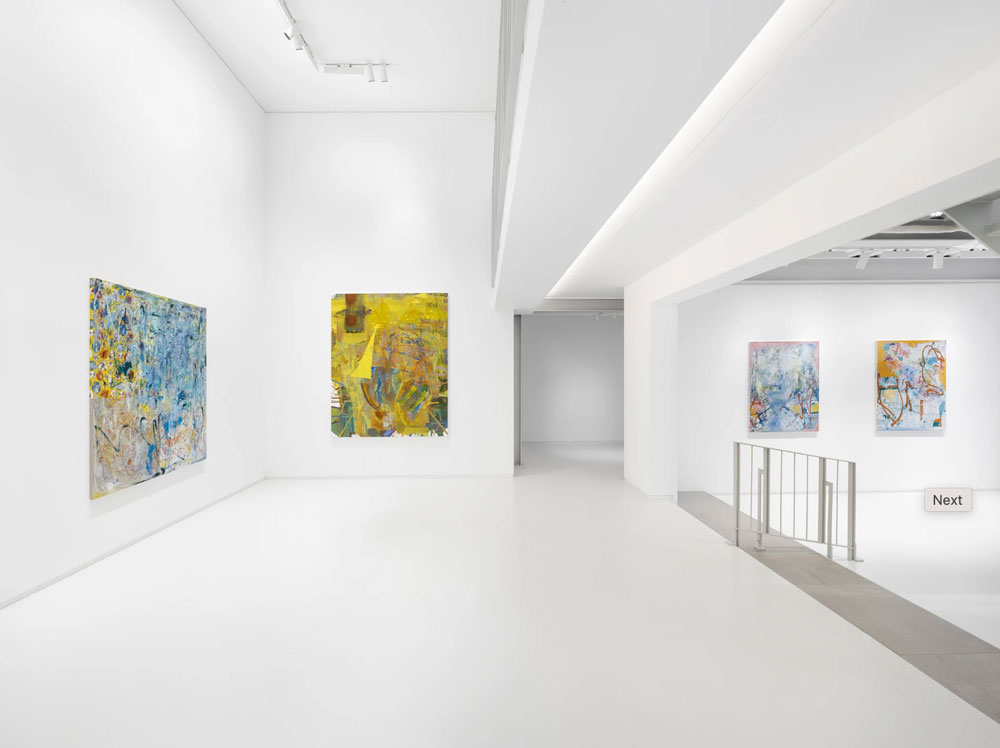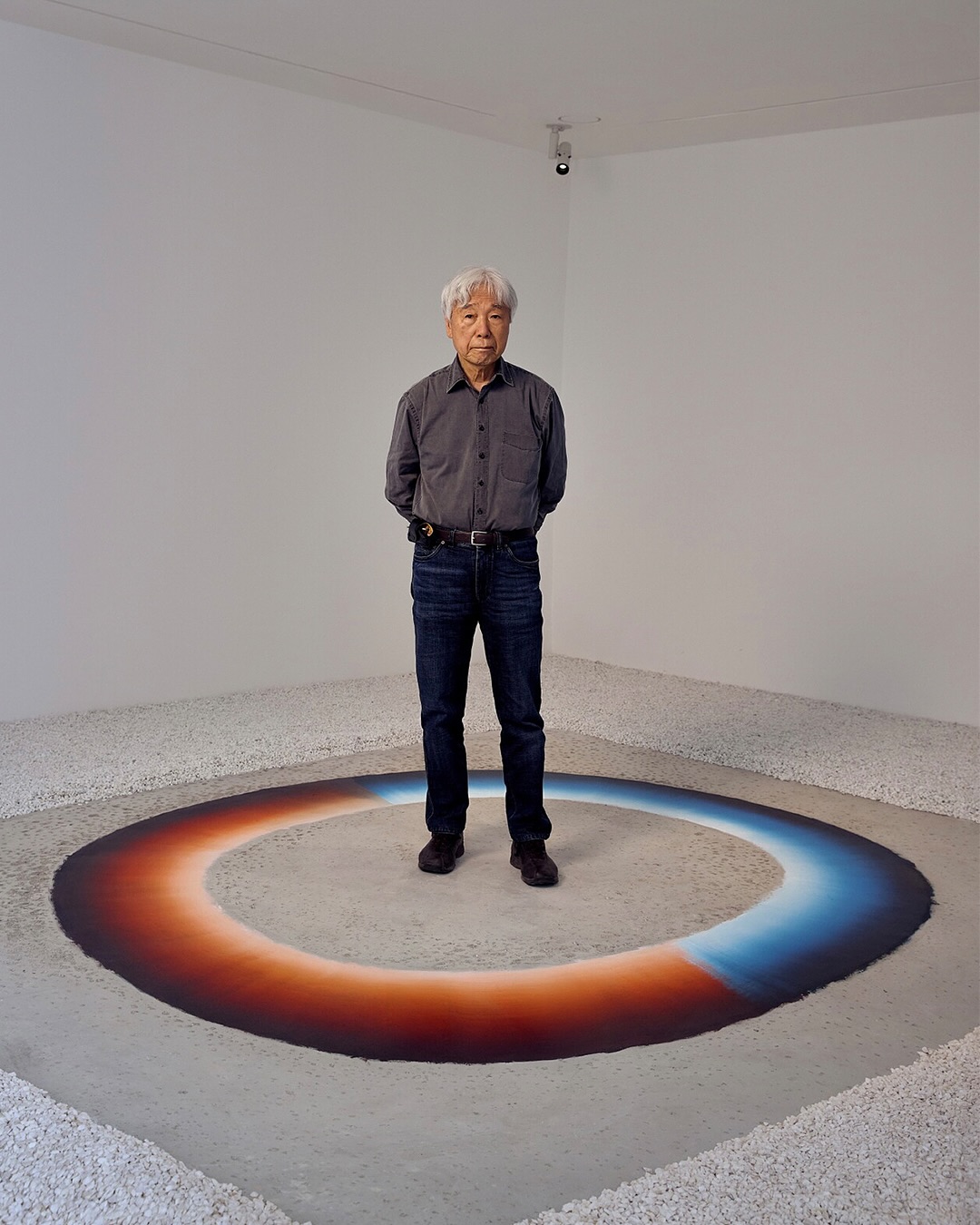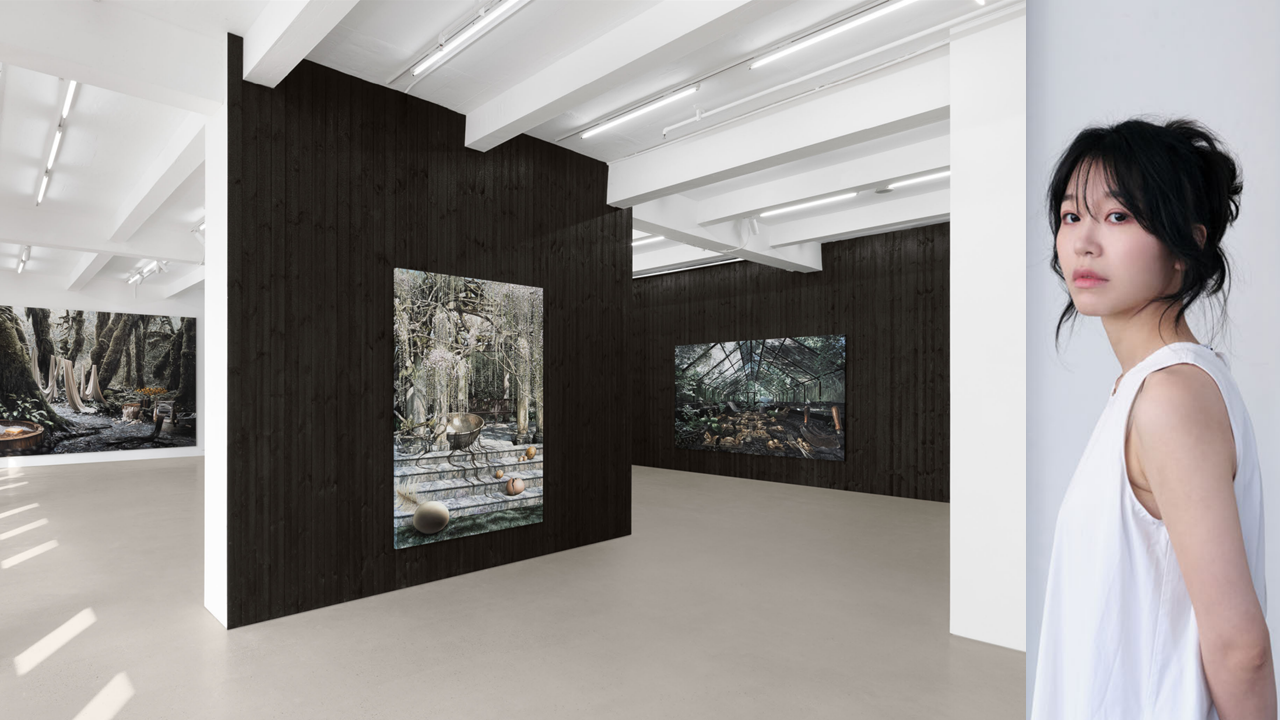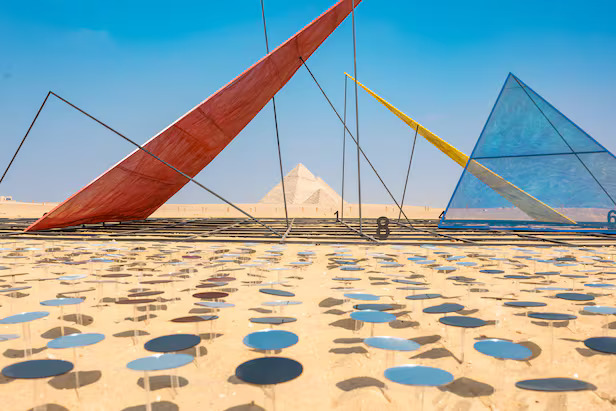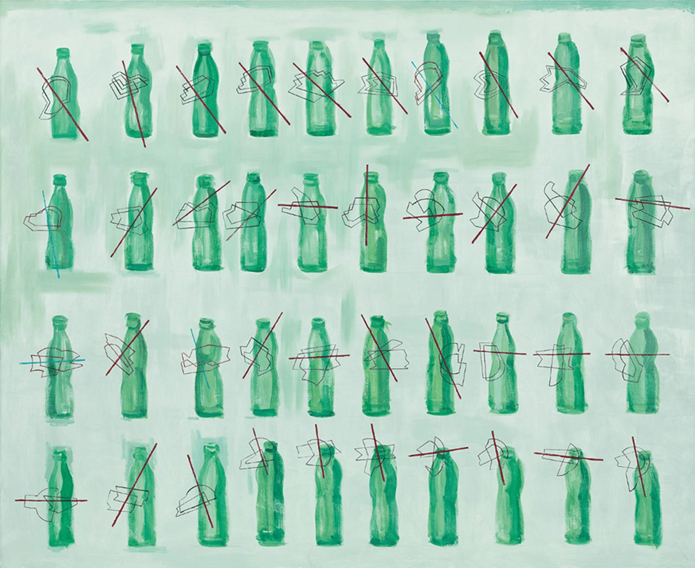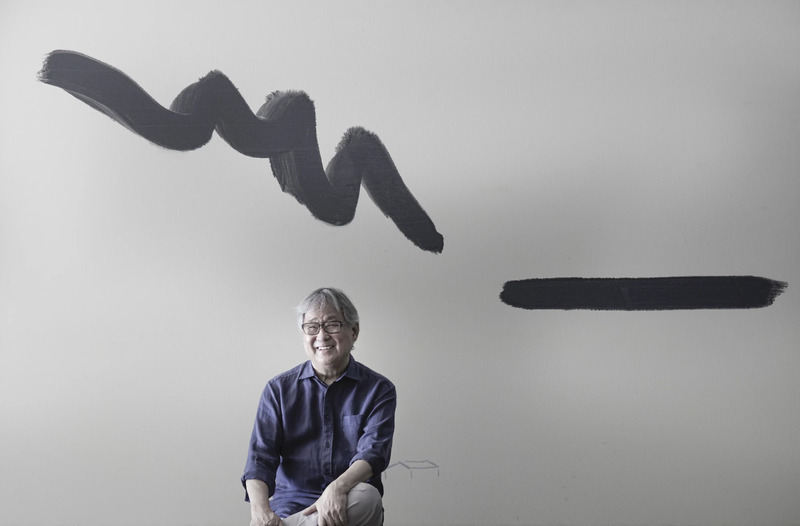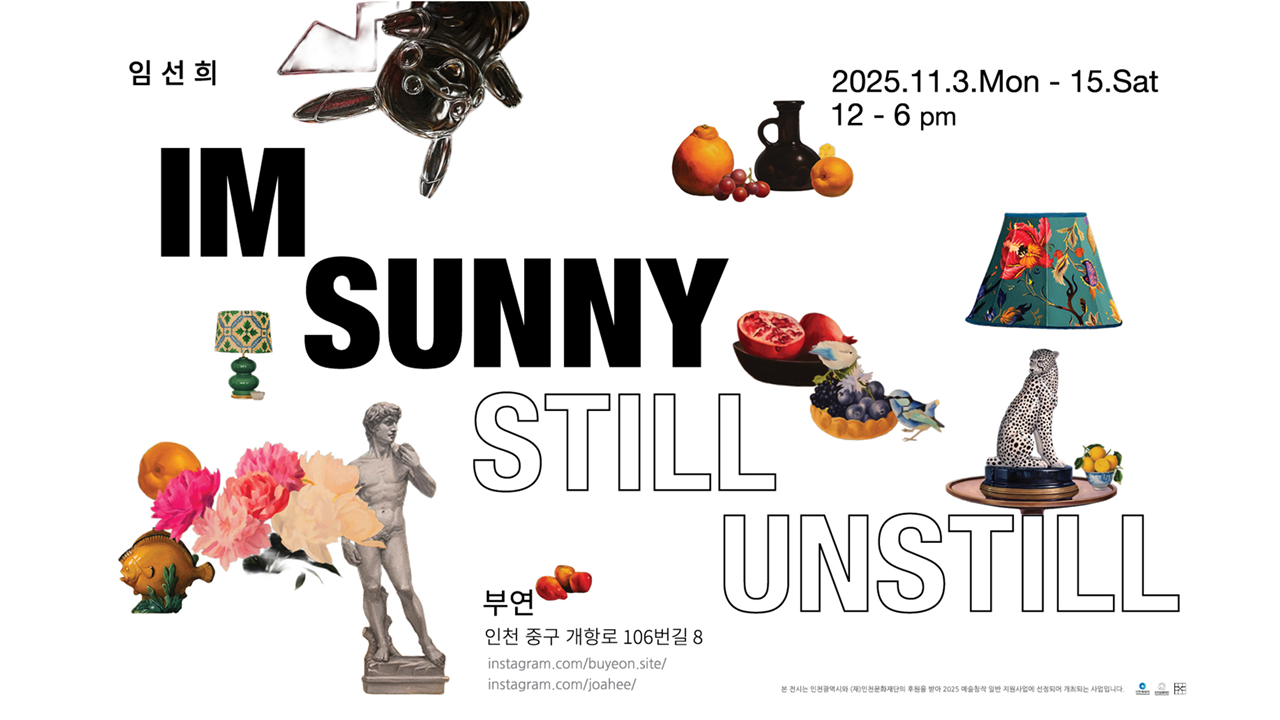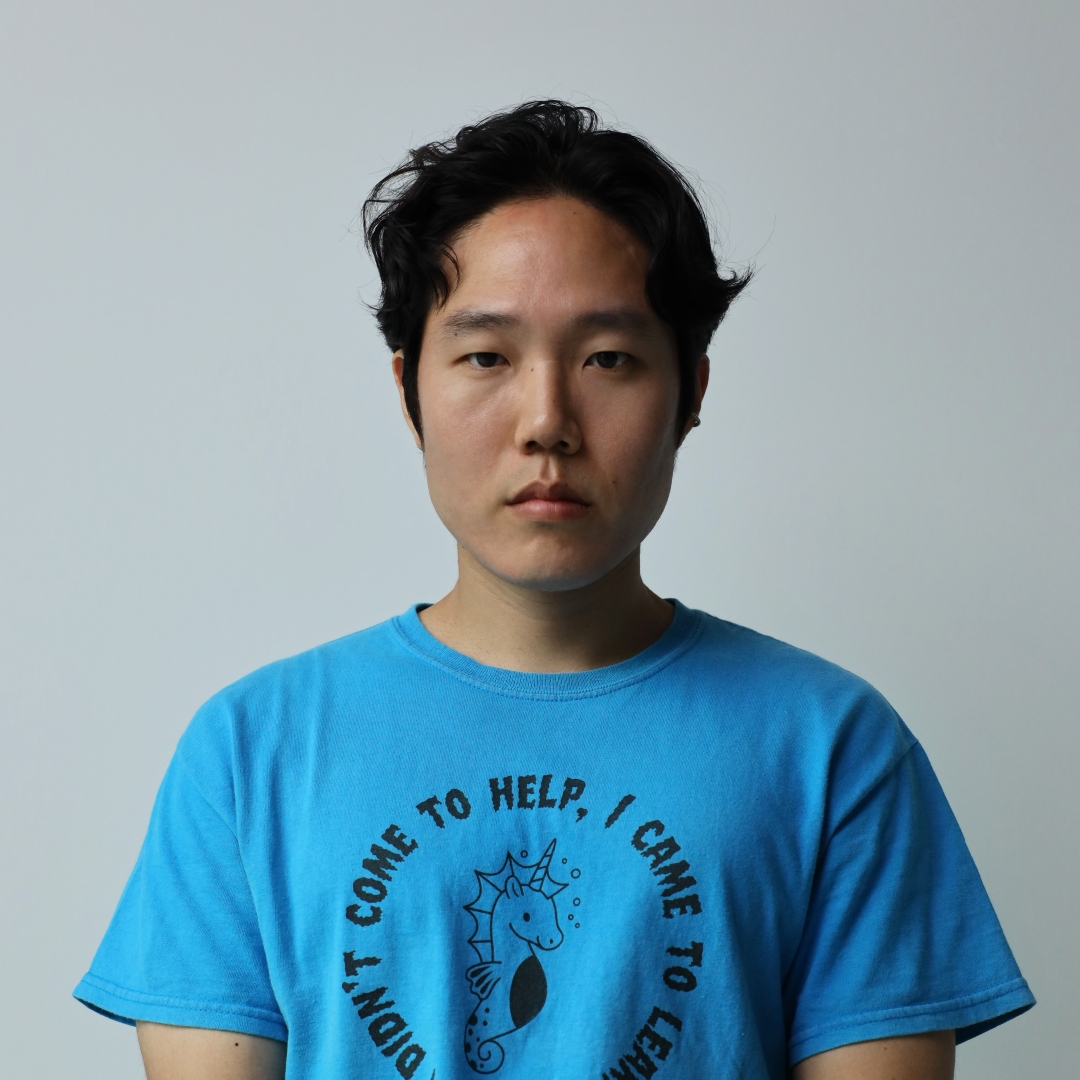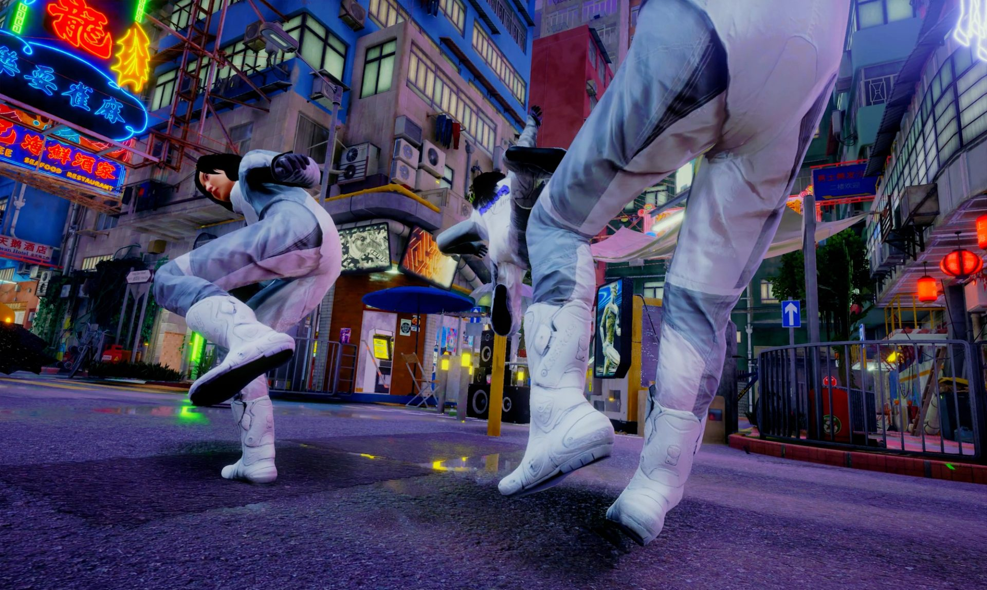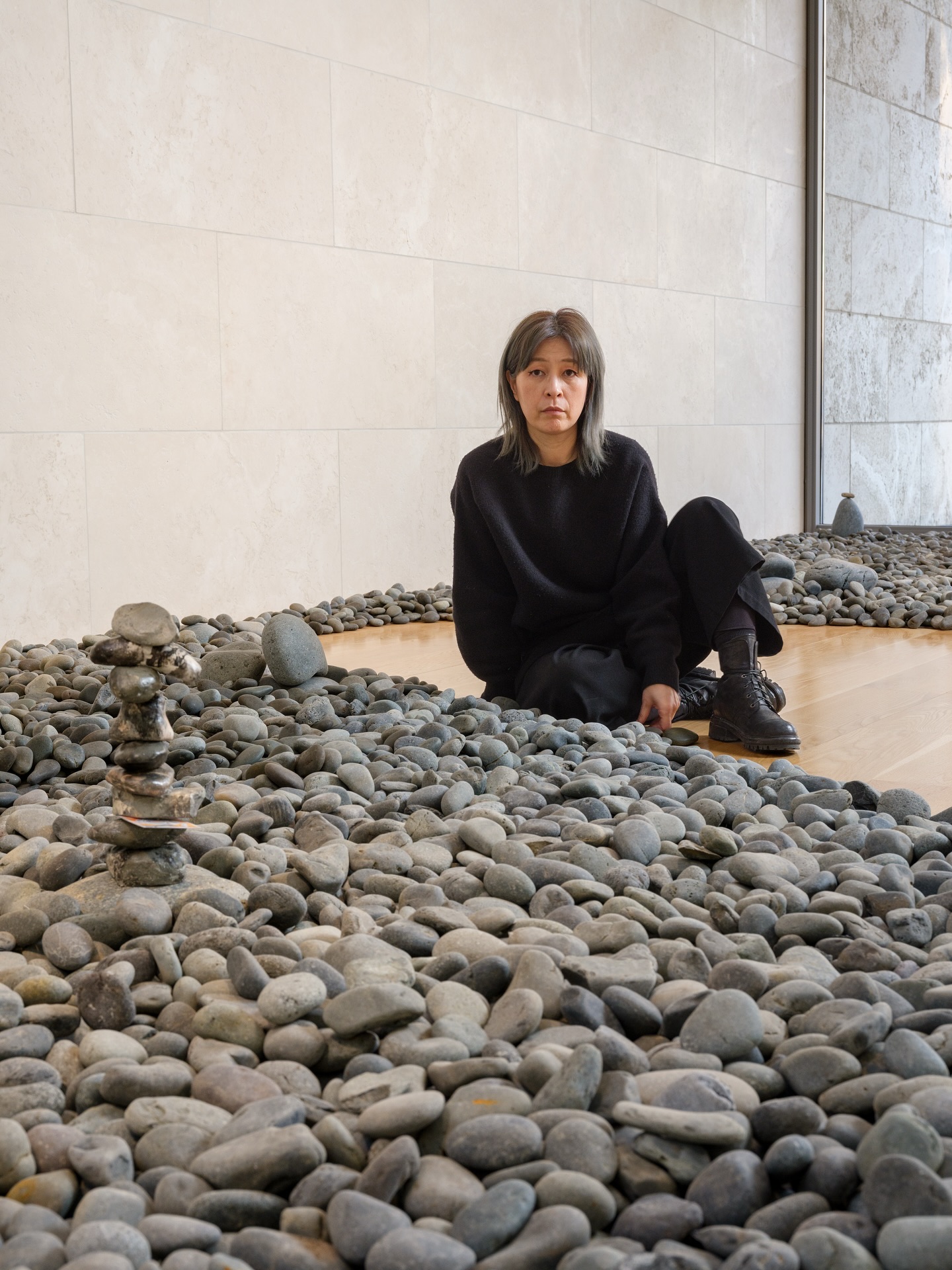Choe Sooryeon (b. 1986) observes the
aspects of so-called "Oriental-style" imagery and how it is consumed,
reflecting these observations in her paintings. To do so, she collects
traditional cliché images shared across Northeast Asia from classic Korean and
Chinese films. Based on these images, her paintings reveal themes of sorrow,
femininity, disconnection from reality, inner Orientalism, doubt, ignorance,
and absurdity.
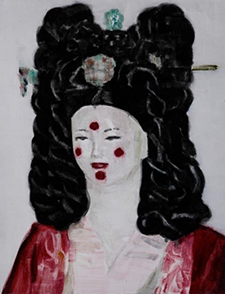
Choe Sooryeon, Eight Seonnyeos (Celestial Maidens), 2013 ©Choe Sooryeon
The artist's interest in classical Eastern
imagery stems from her awareness that her generation’s uncritical perception of
so-called "Oriental-style" or "Orientalist images" is not
so different from the Western gaze. Choe reflects on the background of this
phenomenon, closely examining the transformations, distortions, and repetitions
that occur as these images are reproduced in contemporary contexts. Through
this process, she aims to confront the present reality.
Starting in 2013 with paintings of eerie
mannequins dressed in traditional attire, she has since depicted scenes from
shamanistic rituals, Korea’s new religious movements, historical dramas, and
traditional ceremonies—images that are somewhat strange or comical yet possess
a certain archaic aesthetic. Among the traditional images consumed in modern
events and media, she selects those that are not concrete representations but
rather consumed purely as an atmosphere, using them as the subjects of her work.
 Choe Sooryeon,
Great believer, 2014 ©Choe Sooryeon
Choe Sooryeon,
Great believer, 2014 ©Choe SooryeonChoe Sooryeon collects low-resolution
images captured from photographs or videos taken by others. She then removes
certain unnecessary elements and transfers them onto the canvas with minimal
alteration. The images in her paintings appear ambiguous, characterized by translucent
brushstrokes and the coarse texture of the canvas, emphasizing the painterly
qualities of her work.
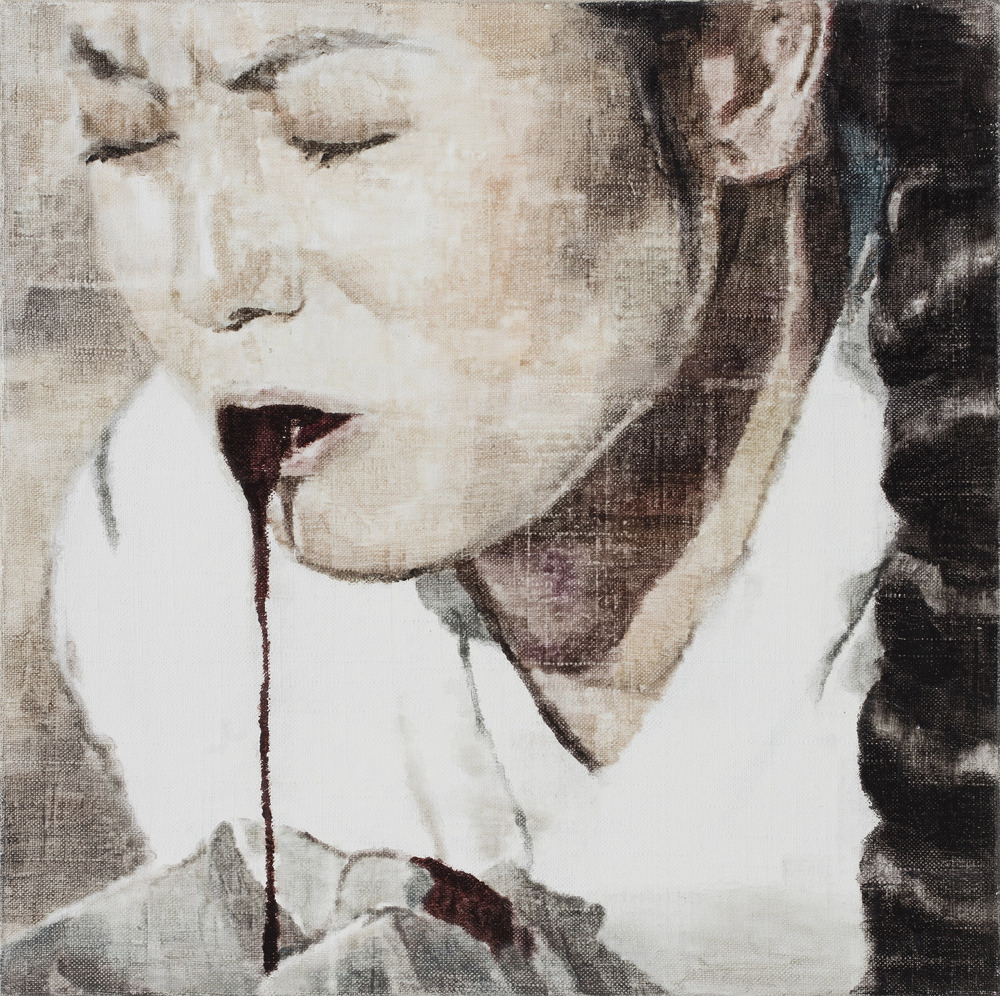 Choe Sooryeon,
懲治 (Deposed Queen Yun), 2016 ©Choe Sooryeon
Choe Sooryeon,
懲治 (Deposed Queen Yun), 2016 ©Choe SooryeonThe artist remains committed to traditional
painting materials. She personally prepares her canvases by treating linen or
hemp with animal glue, creating a surface suited to her practice. Using oil
paint mixed with a high proportion of medium to enhance transparency, she works
quickly in a single layer without revisions or overlaps.
As a final step, she applies oil over the
painting, a process that causes the brushstrokes to blur and partially erase,
leaving behind faint, hazy marks across the surface. These traces play a
crucial role in reducing the illusionistic quality of the image, emphasizing
the materiality of the painting.
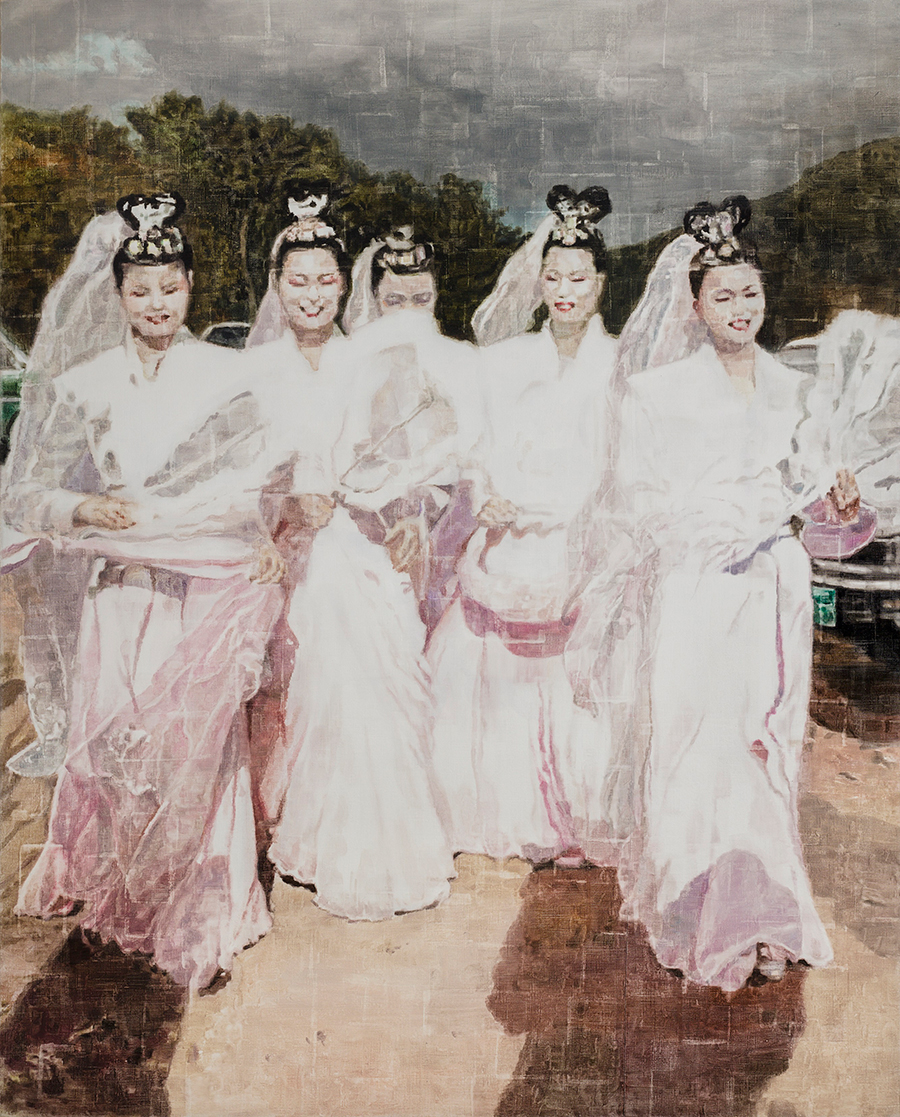 Choe Sooryeon,
Seonnyeo (Celestial Maiden), 2017 ©Choe Sooryeon
Choe Sooryeon,
Seonnyeo (Celestial Maiden), 2017 ©Choe SooryeonChoe Sooryeon’s ‘Seonnyeo (Celestial
Maiden)’ series, which began in 2017, is an extension of her 2013 mannequin
painting Eight Seonnyeos (Celestial Maidens). In her earlier
work, the mannequins were arbitrarily named based on the colors of their
garments, with titles such as "Sea King" (龍王)
or "Jade Emperor" (玉皇上帝), while the female
mannequins were labeled as “Seonnyeo” (celestial maidens).
In East Asian cultural contexts, Seonnyeo
is often imagined as a young, beautiful woman dressed in flowing traditional
garments. However, in this series, the artist moves away from such idealized
depictions and instead portrays Seonnyeo as a real, tangible person.
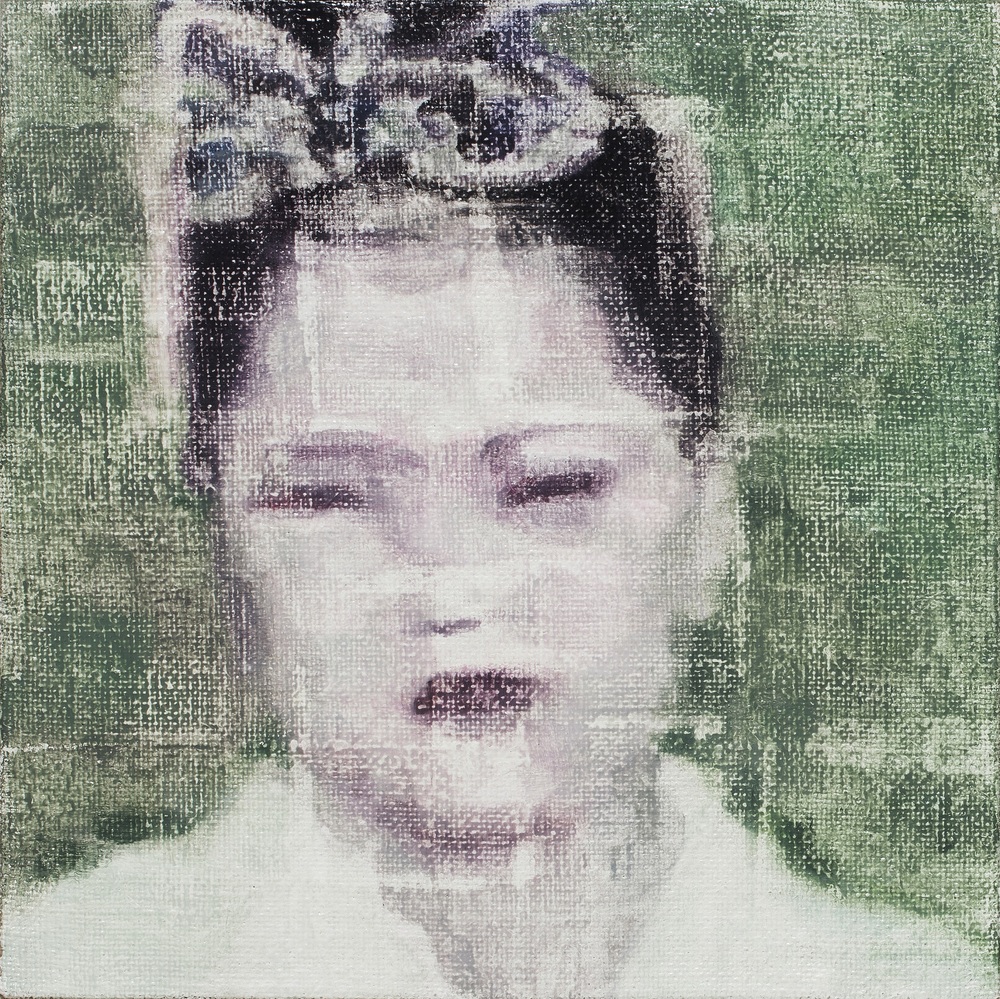 Choe Sooryeon,
Seonnyeo (Celestial Maiden), 2017 ©Choe Sooryeon
Choe Sooryeon,
Seonnyeo (Celestial Maiden), 2017 ©Choe SooryeonIn this series, the artist primarily
depicts ordinary middle-aged Korean women dressed as Seonnyeo for local
festivals and events, focusing on those with bored or somber expressions. These
celestial maidens, with their strikingly unremarkable faces, subvert
conventional expectations, evoking a sense of estrangement and
peculiarity.
Just as Seonnyeo often play supporting
roles in classical narratives, they continue to serve a secondary function in
contemporary events, appearing as decorative figures while men perform the main
rituals. Acknowledging this dynamic, the artist reinterprets the image of
Seonnyeo—not as an ornament created for someone else's purpose, but as an
ordinary person with an individual presence.
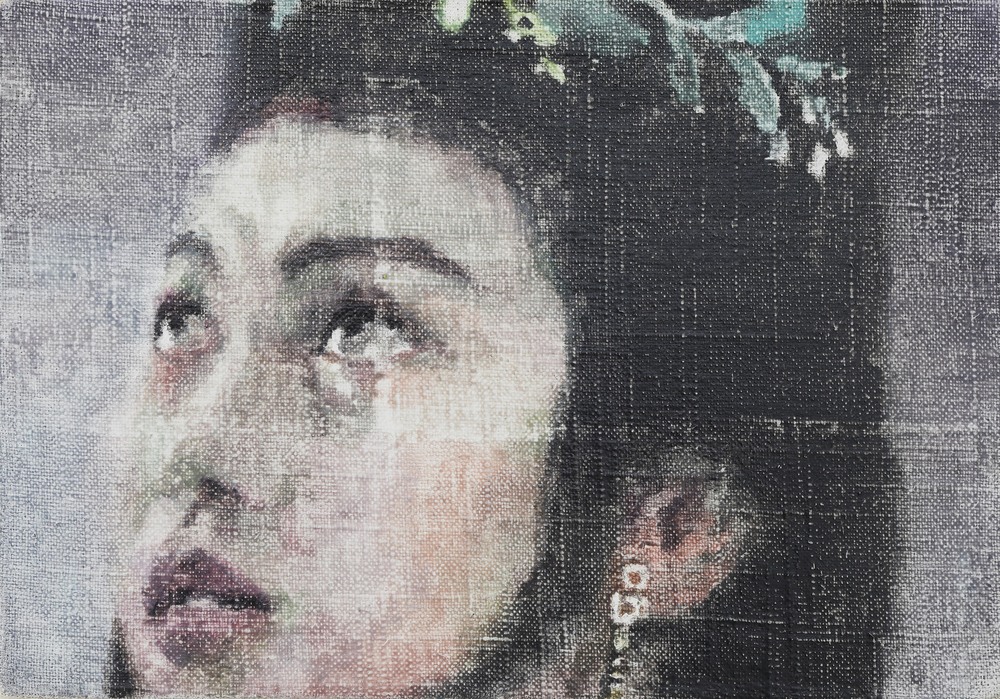 Choe Sooryeon,
Carefree women, 2021 ©Choe Sooryeon
Choe Sooryeon,
Carefree women, 2021 ©Choe SooryeonIn contrast to the ‘Seonnyeo’ series, which
portrays real individuals, her ‘Carefree women’ series, begun in 2019, depicts
fictional female characters from films and dramas. The imagery in ‘Carefree
women’ is largely based on the sorrowful female figures frequently seen in
Chinese films and television dramas from the 1980s and 1990s.
Regarding this series, Choe notes that it
emerged from her ambivalence toward the consumption of "Oriental-style
beautiful women" imagery, including Seonnyeo. While she critically
examines the way such images are consumed, she also confronts her own
contradictory desire to paint these familiar clichés.
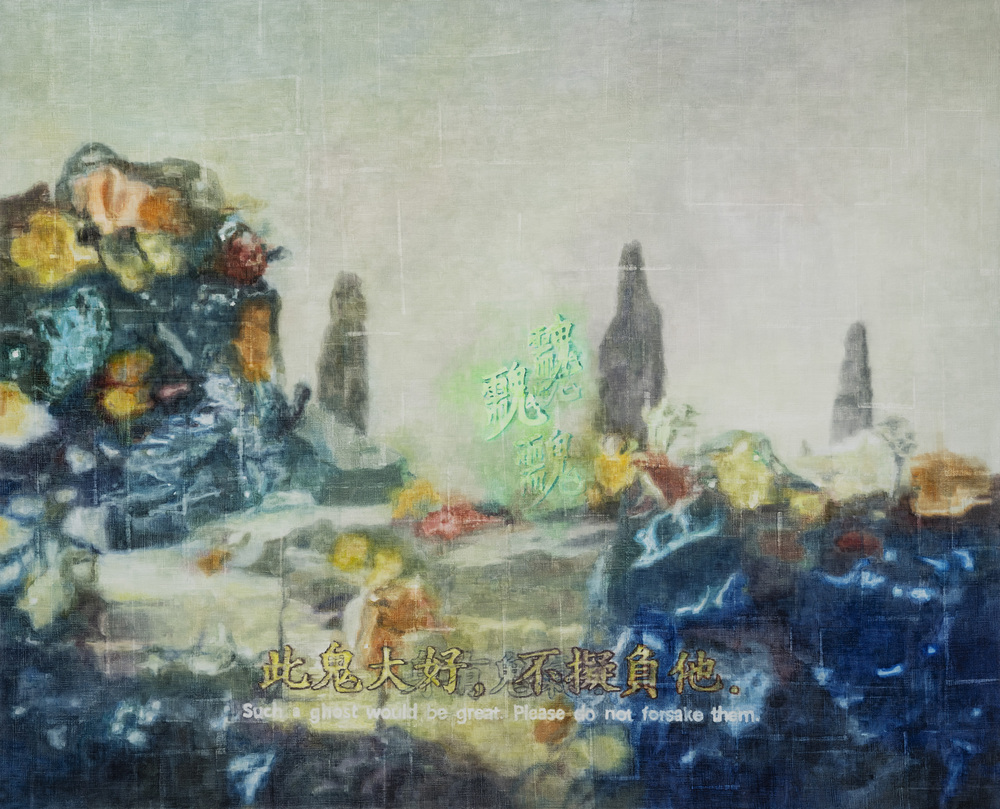 Choe Sooryeon,
Such a ghost would be great. Please do not forsake them., 2022
©Choe Sooryeon
Choe Sooryeon,
Such a ghost would be great. Please do not forsake them., 2022
©Choe SooryeonChoe Sooryeon also collected lines about
ghosts from Taoist and supernatural films popular in China and Hong Kong during
the 1980s and 1990s, particularly those in which ghosts speak as direct
narrators or interlocutors. Unlike the nostalgic and idyllic imagery often
associated with the past, these lines reflect a worldview rooted in moral
retribution, tinged with pessimism and tragedy.
The artist sees these archaic
phrases—though seemingly obsolete—as still loosely or intimately connected to
the absurdities of contemporary reality. Since she is not fluent in Chinese
characters, she specifically selected scenes where English subtitles were
provided, even retaining awkward translations when they appeared. Additionally,
she sometimes added phonetic annotations to certain Chinese characters in her
works, reflecting the linguistic environment of her generation.
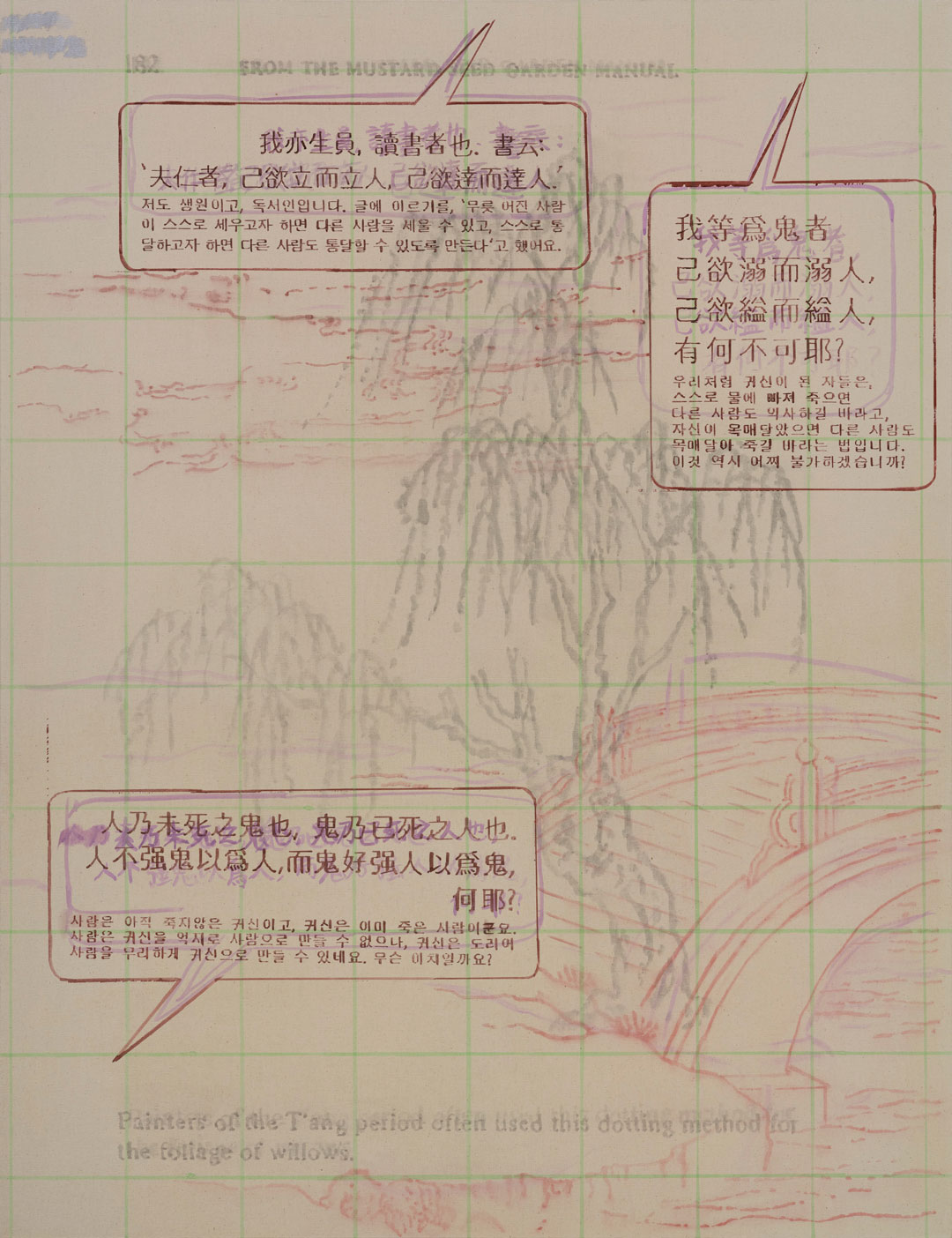 Choe Sooryeon,
Sutra Copying for the Hangul Generation (The Principle of Ghosts),
2022 ©Choe Sooryeon
Choe Sooryeon,
Sutra Copying for the Hangul Generation (The Principle of Ghosts),
2022 ©Choe SooryeonIn addition, Choe Sooryeon created a
transcription series tailored for a generation more familiar with Hangul than
Chinese characters. While translating and comparing texts collected from
classical folklore and films, she incorporated gestures of "studying"
into her work—akin to a beginner refining their strokes in traditional
calligraphy or painting practice.
Unlike conventional transcription, which
typically involves practicing beautiful and uplifting phrases, her ‘Sutra
Copying for the Hangul Generation’ series features phrases and narratives that
deviate from the moralistic worldview of traditional folklore and films. She
treats large pieces of muslin cloth as oversized calligraphy paper, writing,
striking through, and refining the text with a light and experimental
approach—subverting the disciplined attitude typically associated with
traditional calligraphy practice.
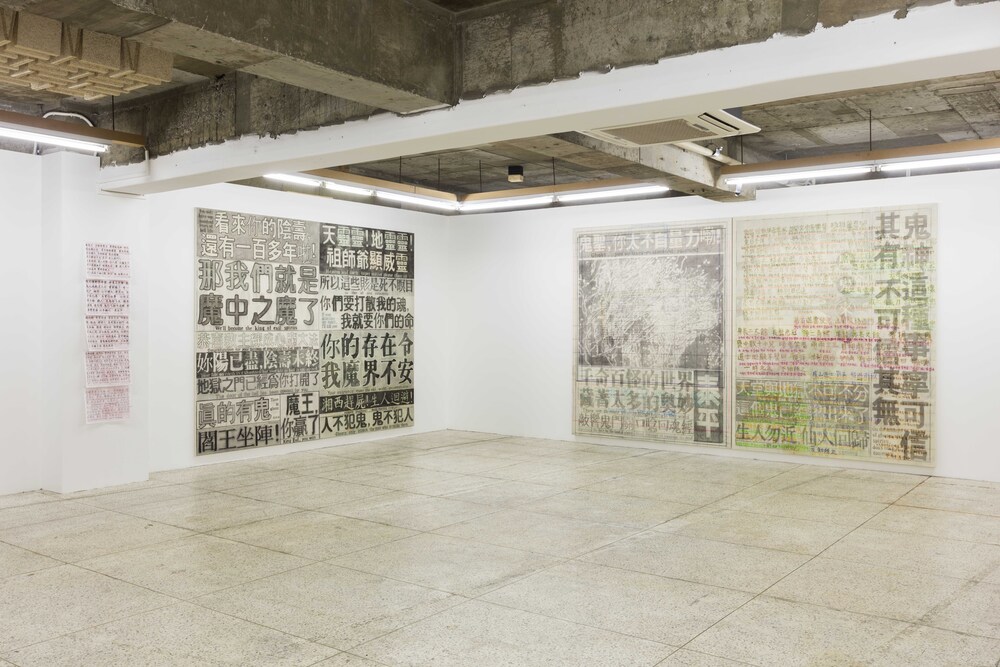 Installation view
of 《Drawing in the Fog》 (Sansumunhwa, 2020) ©Choe
Sooryeon
Installation view
of 《Drawing in the Fog》 (Sansumunhwa, 2020) ©Choe
SooryeonThese transcription works were also created
in the format of propaganda posters. Choe aimed to blend the practical aspect
of propaganda, which conveys specific messages and narratives, with the
familiar aesthetic pleasure derived from Oriental clichés.
To evoke the inherent lightness of this
content, the artist chose formats such as tearable flyers, retro-style slogan
posters, and advertising banners (or drawings intended for their design).
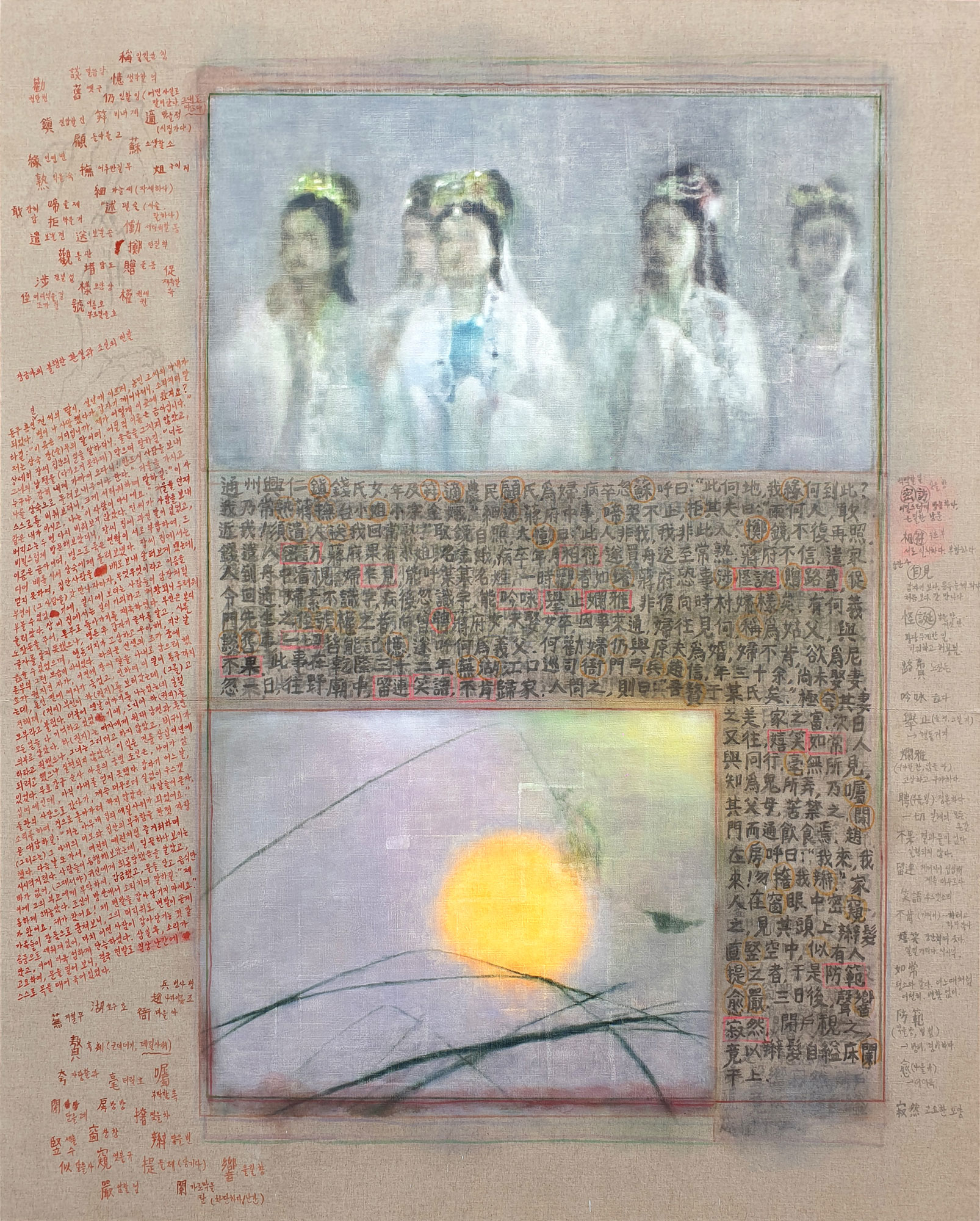 Choe Sooryeon,
Jiang Jin’e’s unfortunate reincarnation and Zhao Xin’s Queue,
2024 ©Choe Sooryeon
Choe Sooryeon,
Jiang Jin’e’s unfortunate reincarnation and Zhao Xin’s Queue,
2024 ©Choe SooryeonChoe Sooryeon’s recent work Jiang
Jin’e’s Unfortunate Reincarnation and Zhao Xin’s Queue (2024) is a
large-scale piece that combines transcription and painting based on classical
folklore. In this work, the artist adopts the format of Islamic illustration
art, where text and image maintain their own distinct realms. The canvas is
structured with the text translated outside the frame, differing from her
previous works.
As can be inferred from the title, this
work connects two different folktales as though they form a single narrative.
Rather than treating each story separately, the artist chose to bring together
tales with a similarly overwhelming sense of despair, thus revealing an aspect
of incomprehensible tragedy itself. The images drawn alongside these stories
were selected as clichéd scenes that could serve as the background for any
narrative.
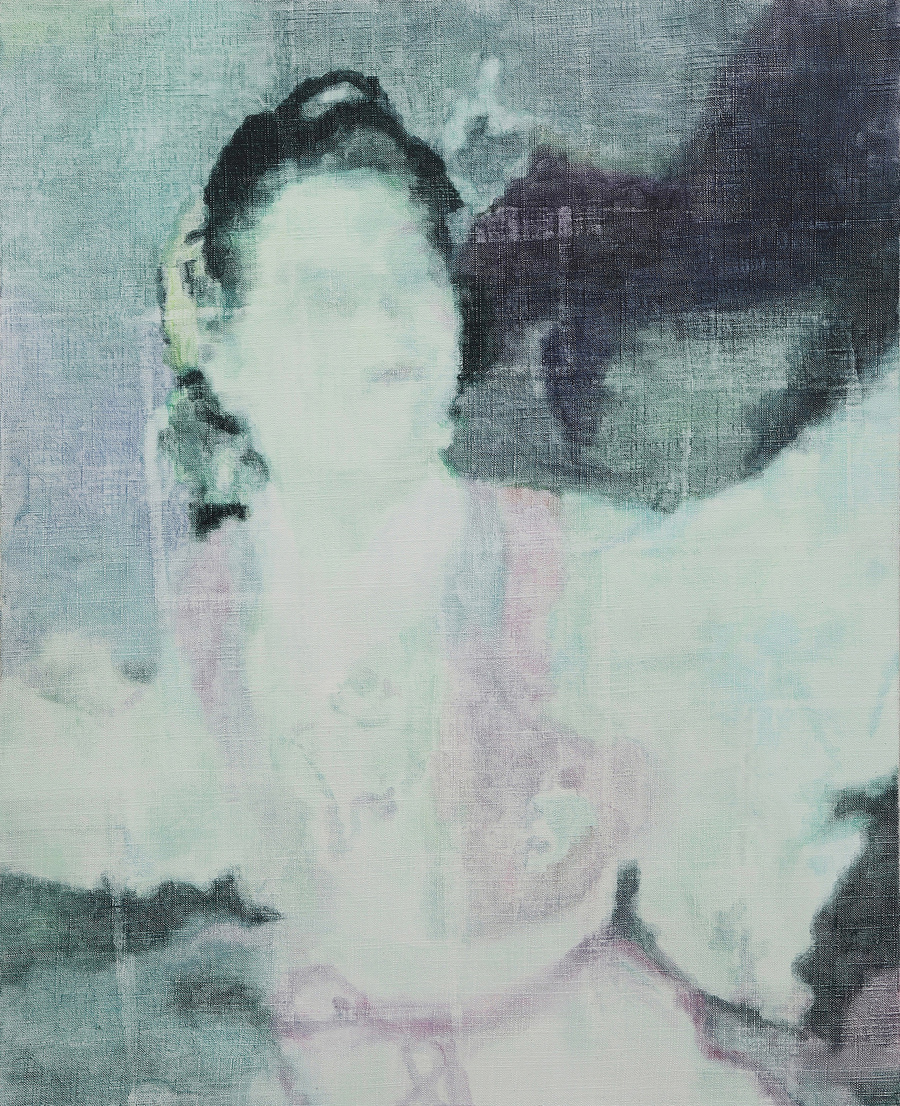
Choe Sooryeon, Carefree women, 2021 ©Choe Sooryeon
In this way, Choe Sooryeon has continued to recontextualize the myths, legends, ghost stories, and folktales of Northeast Asia, which carry the absurdity and sorrow of reality, beginning with a critical exploration of the reproduction and consumption of ‘oriental’ imagery. Her work may seem to address something classical and traditional, that is, from the 'past', but the artist examines the surrounding contemporary context, depicting the sorrow, doubt, absurdity, and ignorance inherent in her generation and our society today.
"There are so many things in the world
that are unknown, and particularly things that seem unbelievable, but are too
common to ignore. 'How should we view this?' is the main question in my
work." (Choe Sooryeon, BE(ATTITUDE) Interview)
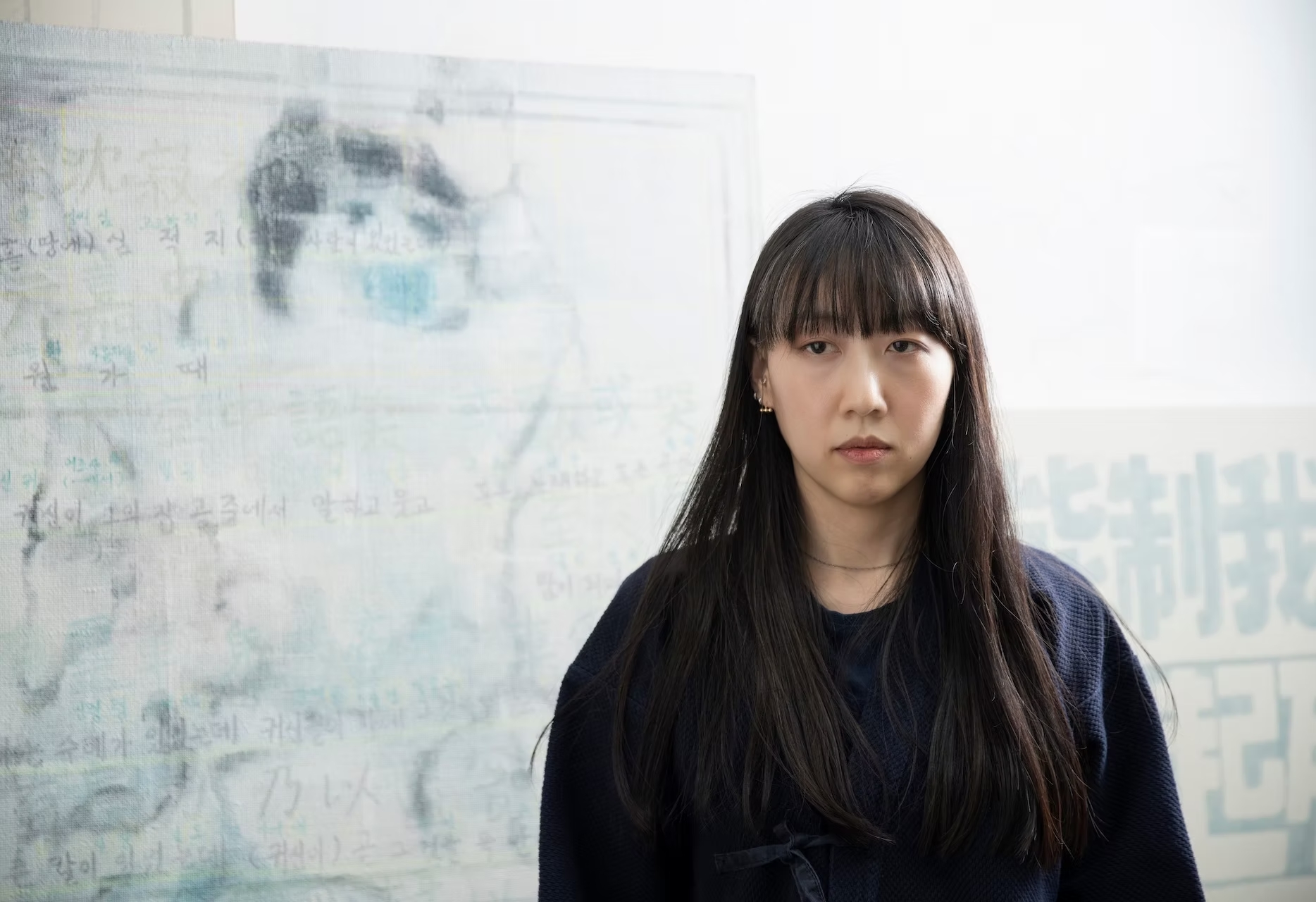 Artist Choe
Sooryeon ©Chongkundang Yesuljisang
Artist Choe
Sooryeon ©Chongkundang YesuljisangChoe Sooryeon majored in painting at Hongik
University and earned a master’s degree in Western painting from Seoul National
University. Her recent major solo exhibitions include 《Hoe
for painted and Hwa for painting》 (Gallery Chosun,
Seoul, 2023), 《Drawing in the Fog》 (Sansumunhwa, Seoul, 2020), 《Pictures for
Use and Pleasure》 (Incheon Art Platform, Incheon,
2020), 《Music from a decaying country》 (Cheongju Art Studio, Cheongju, 2019), and more. She also
participated in two-person show 《Bead & Orchid》
(Chamber, Seoul, 2024).
Choe has also participated in numerous
group exhibitions at institutions such as Gallery Chosun, Gyeonggi Museum of
Modern Art, ARKO Art Center, Museumhead, ThisWeekendRoom, Seoul Museum of Art,
HITE Collection, Insa Art Space, and Art Space Pool. She has been part of
residency programs at Studio Whiteblock (Cheonan, 2022-24), Incheon Art
Platform (Incheon, 2020-2021), Factory of Contemporary Arts in Palbok (Jeonju,
2019), and Cheongju Art Studio (Cheongju, 2018).
She received the 2020 Chongkundang
Yesuljisang, and her works are currently housed in the collections of the Seoul
Museum of Art, Seoul National University Museum of Art, and the MMCA Art Bank.
References
- 최수련, Choe Sooryeon (Artist Website)
- 인천문화통신 3.0, 최수련 인터뷰, 2020.07.22 (IFACNEWS 3.0, Choe Sooryeon Interview, 2020.07.22)
- 인천아트플랫폼, 최수련 (Incheon Art Platform, Choe Sooryeon)
- 인천아트플랫폼, 2020 창제작 발표 프로젝트 3. 최수련 개인전, 《Pictures for Use and Pleasure》 (Incheon Art Platform, Project Support Program 2020 3. Choe Sooryeon Solo Exhibition, 《Pictures for Use and Pleasure》)
- 갤러리조선, ‘한글세대를 위한 필사’ 연작 (Gallery Chosun, ‘Sutra Copying for the Hangul Generation’ series)
- 비애티튜드, 무용한 고군분투 혹은 지극한 사랑

